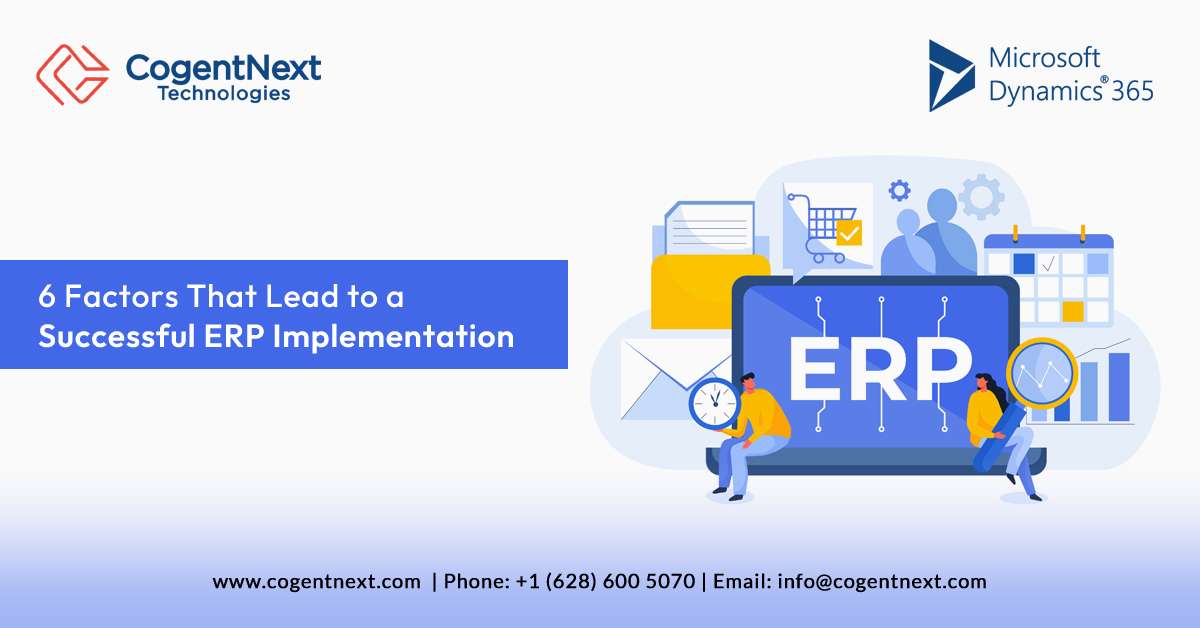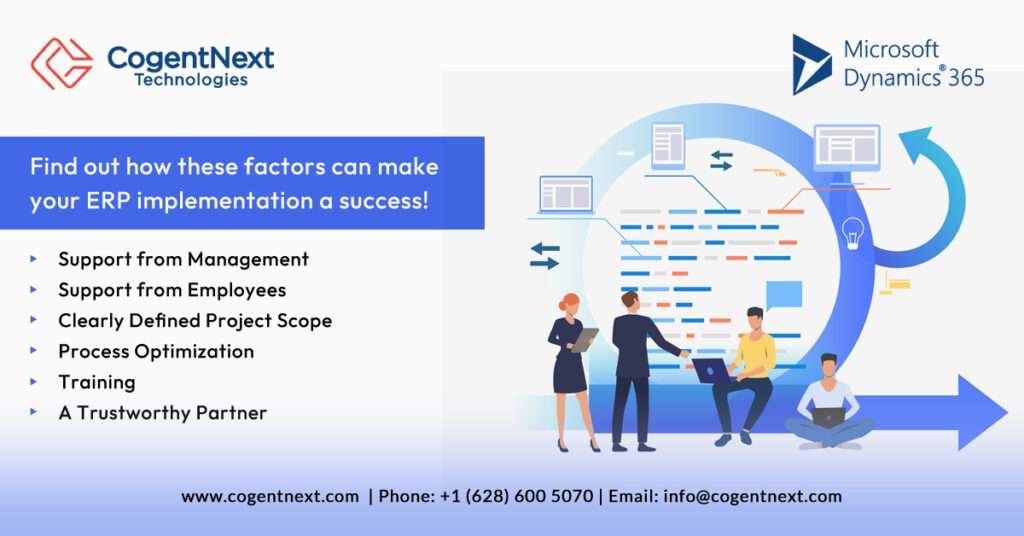
6 Factors That Lead to a Successful ERP Implementation
Being such a large investment of time and funds, everyone wants their ERP implementation to be a success. Implementation best practices are constantly changing as more software moves to the cloud and as new technologies and business challenges arise.
At the same time, certain principles of ERP implementation are timeless. These are often centered around people and processes rather than technology – and they are the factors that have the biggest impact on the success of your project.
An ERP implementation involves more than just software – they are about people. Why do we say that? The success of a project depends to its greatest extent on people: the people who manage the project, the people who customize the system, and most importantly, the people who will use the software from day to day. Without wholehearted support from both project team members and end users, the ERP implementation project will struggle to succeed.
In this article, we’ll explain 6 important factors that can help make your project a success. Caring for these important areas will protect you from most of the pitfalls that prevent you from getting a full return on the investment in your new ERP system.

1) Support from Management in ERP Implementation
A president, a board of directors, the C-Suite – whatever title applies to your organization, the point is the same: A successful ERP implementation has full support from all levels of leadership and management. This means more than simply approving the project. They must agree on the requirements, objectives, and other high-level factors in the process. Leadership must also give priority to the needs of the project, allowing team members to focus on their assignments by relieving them of some of the duties of their regular role in the company.
2) Support from Employees
Having an internal project team, composed of diligent, knowledgeable employees with a vested interest in the project’s success, keeps the project on track, on time, and on budget. Your team should know your business processes inside and out, work in harmony with the stated objectives, and should be capable and authorized to make key decisions during the implementation.
What is more, your end users will also need to support the project. Make sure their concerns are heard and acknowledged. Provide adequate opportunities and methods for user input. Ensure everyone is trained throughout the project so they’ll feel comfortable with the new system and clearly understand how it benefits them in their respective roles. The more they align themselves with the new system, the more they’ll use it, and the more benefit your organization will receive.
3) Clearly Define the Scope of the Project
It’s hard to hit what you can’t see. It’s hard to see what you want the result to be with an ERP implementation without scoping it first. The requirements must be thoroughly researched and documented and the resources you have available must be taken into account. You should do a thorough job in the beginning, with the idea that few, if any, changes to the scope will need to be made. Changes in midstream can quickly become expensive and debilitating to the project timeline. Realize that going live with the new system isn’t the end of the road, but rather the beginning. Keep the scope of the project realistic and focused. Plan to expand into other areas in the future, when you’ve used the system for a while and have a clearer picture of what you’ll need moving forward.
4) Use the Occasion to Optimize Your Processes
Implementing a new ERP solution is a disruptive change in your organization. Yet, customizing the software to adhere to existing inefficient processes can cost more to develop and provide little long-term benefit. While you’re in the process of making disruptive changes in your organization, can you take advantage of the opportunity to rethink, optimize, and streamline the way you do business? If you reinforce those improved processes by building them into your ERP implementation, you will enable your company to produce more results with less time and effort, which leads to greater revenue.
5) Train From the Beginning in ERP Implementation
User adoption is a critical factor in gaining a good return on ERP investment. The system could be perfect, but if your employees don’t want to use it, or create workarounds that subvert your business processes just to make their job easier, you will lose out on the benefits you hoped to gain.
How can you increase employee buy-in? In one word: Training. If users understand how the system operates, and why things are done a certain way, they are more likely to accept the system and work in harmony with the project. What is more, their valuable feedback can reveal unexpected challenges or improvements that can be incorporated to make it even more efficient.
6) A Solid Partner You Can Trust
Although your internal project team is very experienced in the inner workings of your organization, configuring and deploying a complex ERP system is a job for experts. More than IT expertise, a successful ERP implementation requires an intimate knowledge of the system being deployed, along with how that system can best be configured for your industry and unique needs. You’ll want a partner who works well with your team, is committed to the success of the project, and is interested in maintaining a relationship with you after go-live. Training and support are crucial to ensure you get the most out of your system after changing over, and you don’t want to be left high and dry.
Next Steps in ERP Implementation
An ERP implementation is no small undertaking, but it can bring enormous benefits for years to come when it is well-planned and deployed correctly. It may seem daunting, but organizations around the world just like yours have succeeded and are glad they made the effort. With the right partner, you will too.
Contact us today at CogentNext and we can help you determine the right path for your organization’s digital transformation.
By Chandra Subramanian, CogentNext Technologies
